"As I grew up," writes Lowell Hess the introduction to his new book, "it was my only interest to make pictures." And pictures was what Lowell made. From the first box of crayons he received as a small child to the high school days when he drew Indian cartoons like the one below, Lowell earned "a reputation as an artist with talent.
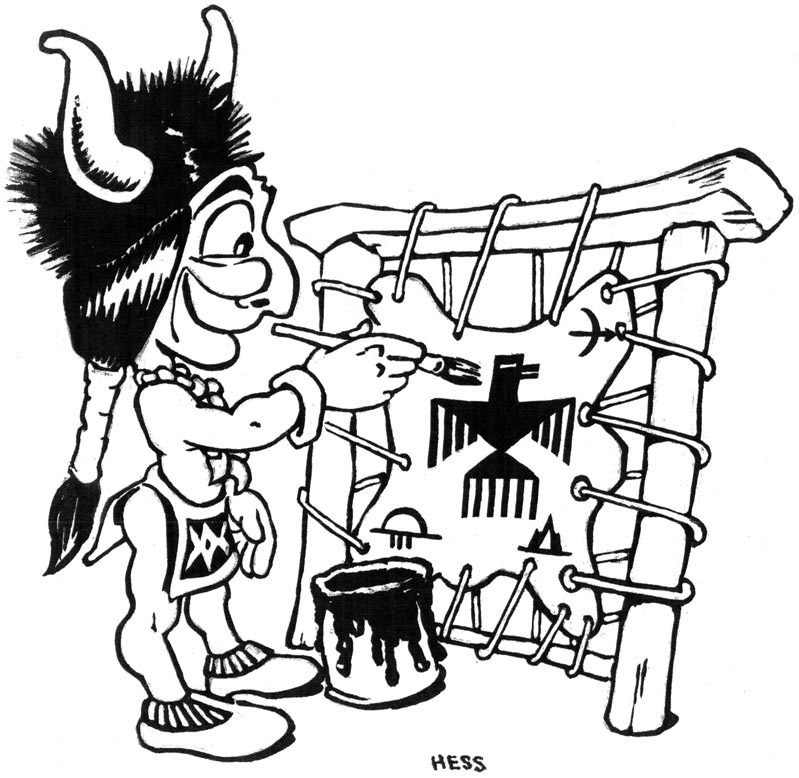
When he attended the University of Oklahoma he "picked up a few covers for the school's humor magazine," drew humorous depictions of student life for the college dance hall and caricatures at the student carnival. Lowell remembers that "long after the festivities, I went home and drew funny faces late into the night."
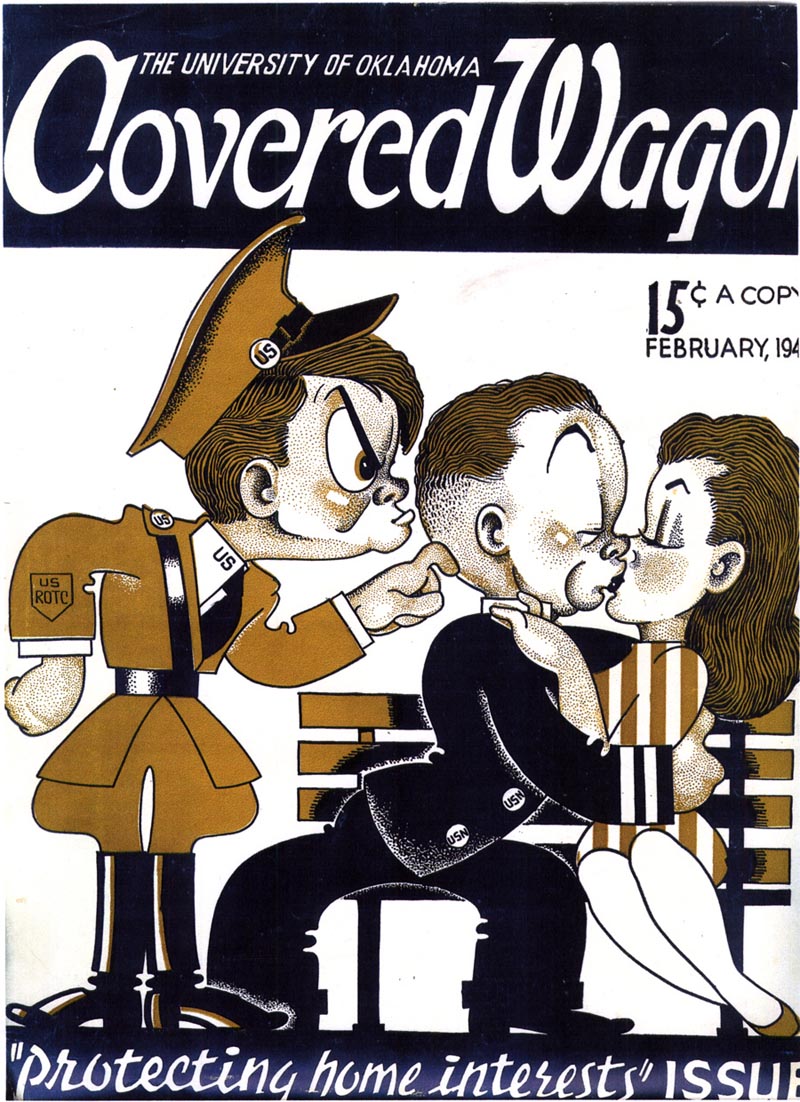
WWII interrupted Lowell's education. The newly married young artist writes that he spent 1942-45 "in army clothes as an Artillery Lieutenant in Europe." After the war Lowell's ambitions quickly brought him to New York. He managed to land the occasional assignment from major magazines like Woman's Home Companion, but competition was tough and work for Lowell was sparse. In one of our early phone conversations Lowell told me Jan Balet, who was enjoying tremendous popularity at the time, was his biggest influence during those formative years, and it shows in this January 1948 example of Lowell's work
.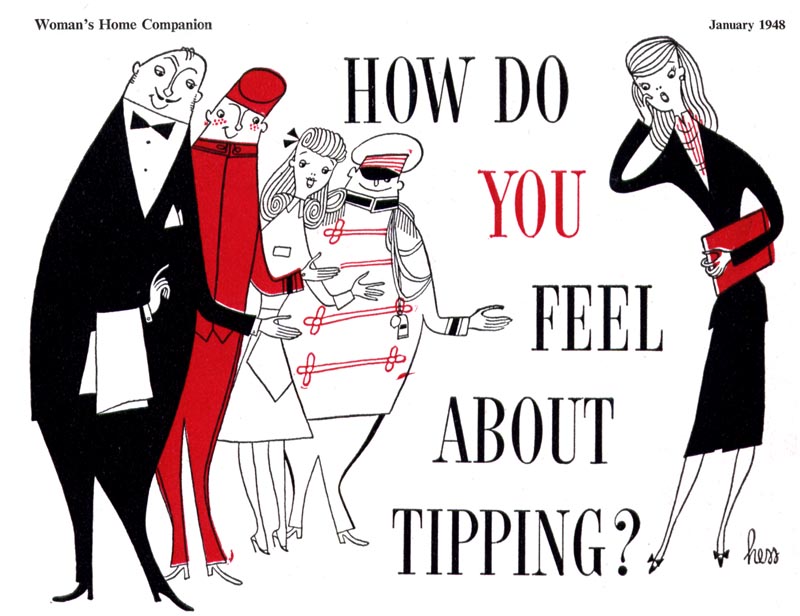
But just a few months later you can see the beginning of the true Lowell Hess style emerging as the young artist became more confident.

By the early '50s, Lowell's career had taken off. He had secured the services of an established artist's rep and was regularly contributing to Collier's magazine - even illustrating three covers - which had been a life-long dream of his.

During that busy decade, Lowell also did 22 covers for Boys' Life magazine...
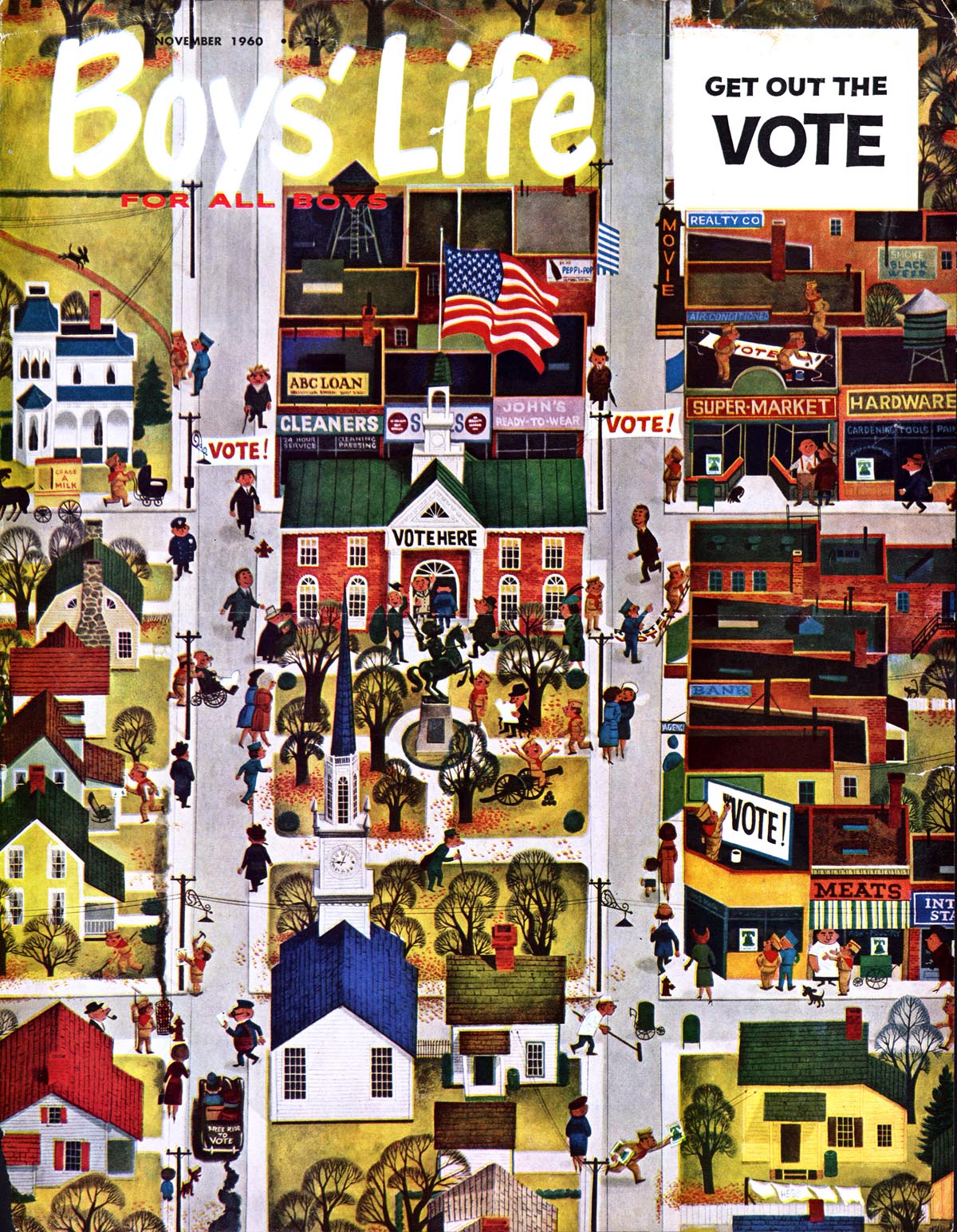
... and even more interior art spots.

In his work for Boys' Life Lowell's versatility really became apparent. He began exploring beyond his cartoon styles...
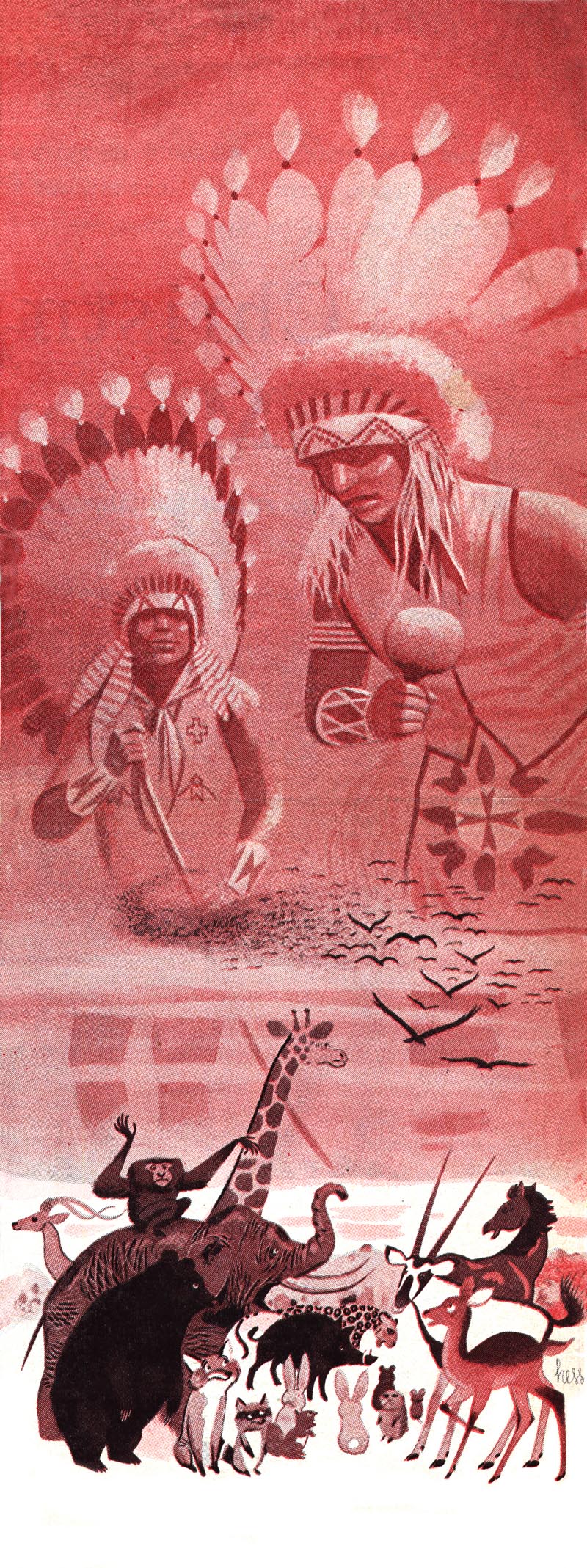
... into something approaching high realism. Lowell's versatility would serve him well on later assignments for Reader's Digest, Time-Life, and other clients.

Another of Lowell's clients during the '50s was a publisher of Crossword Puzzle books.
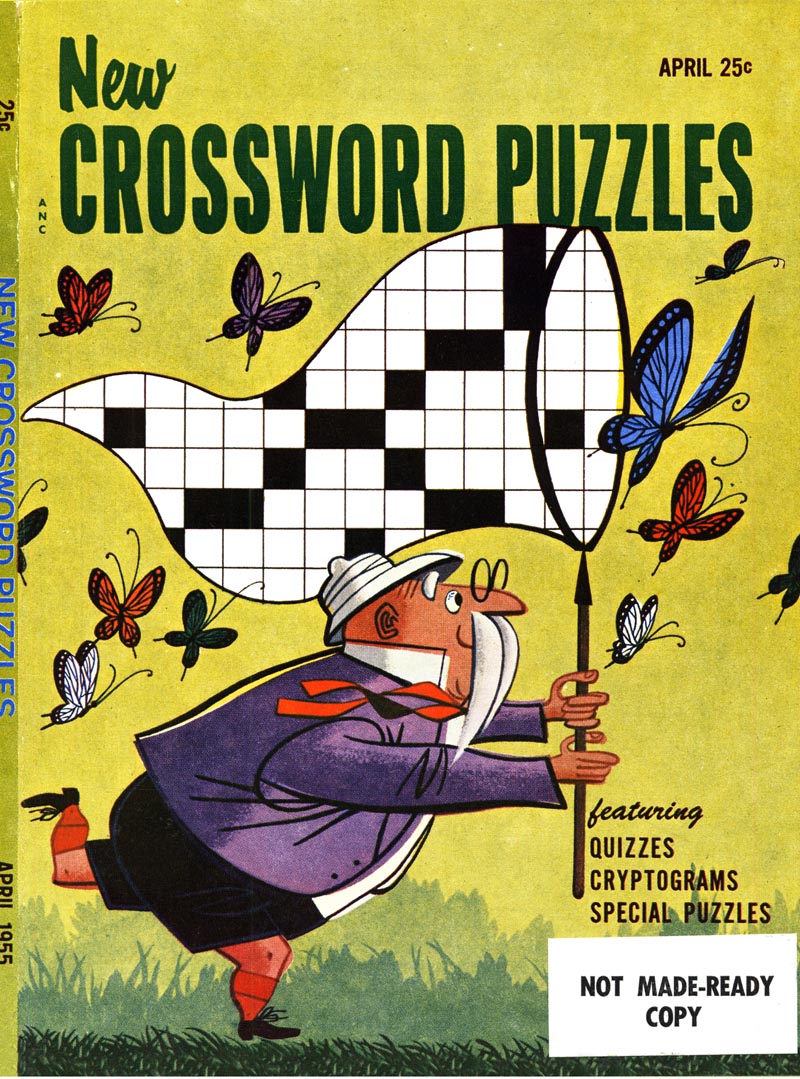
These covers are, in my opinion, some of Lowell's most delightful illustrations...
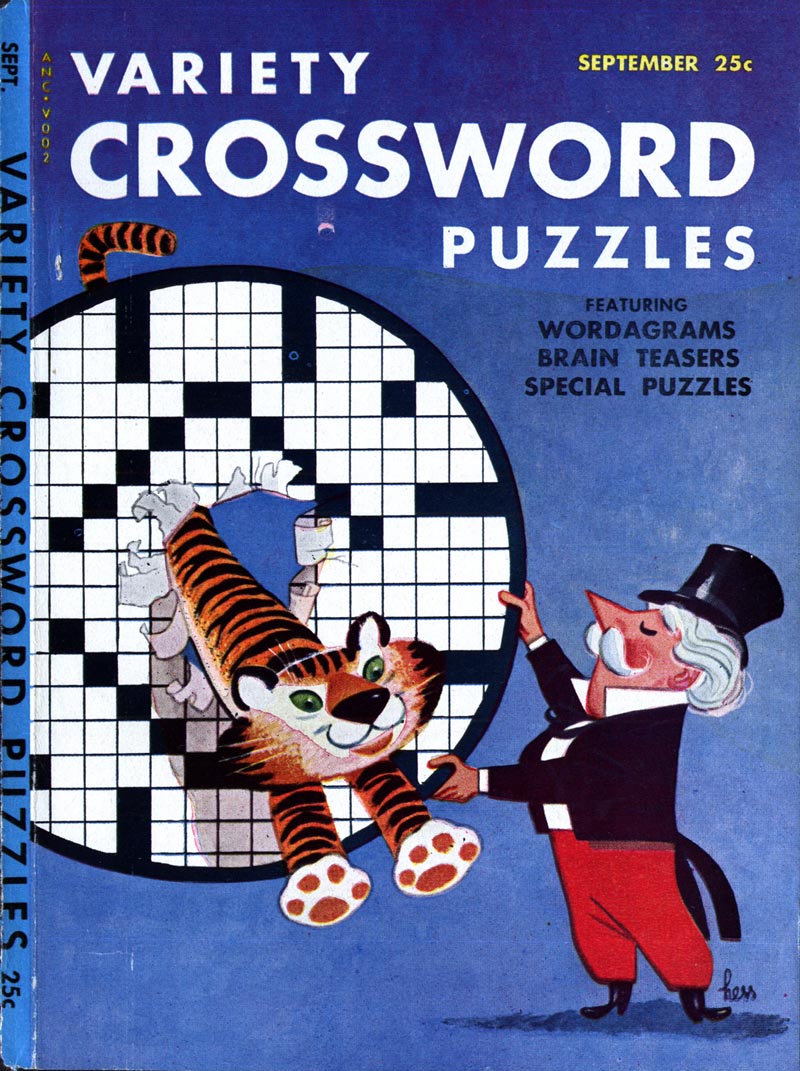
... but until I mentioned it, Lowell told me he hadn't really given them much thought.
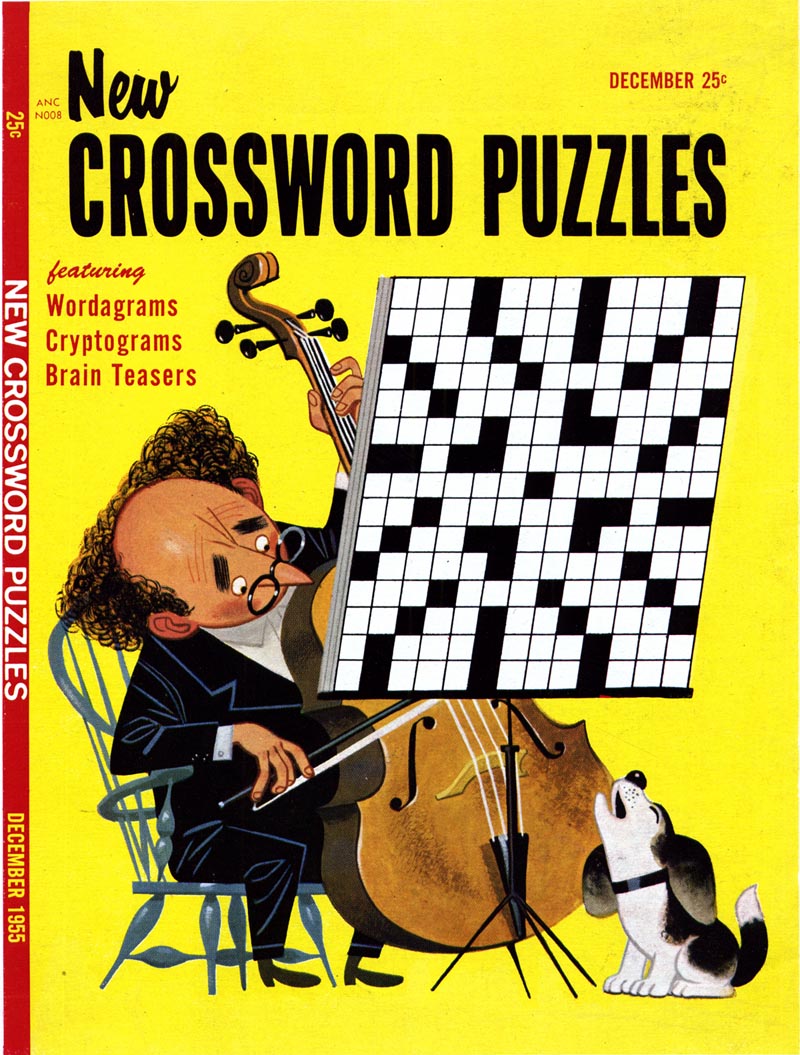
They were low paying and low profile assignments and therefore done quickly. After we discussed them, Lowell told me, "you know, now that you mention it, they're actually pretty good!"
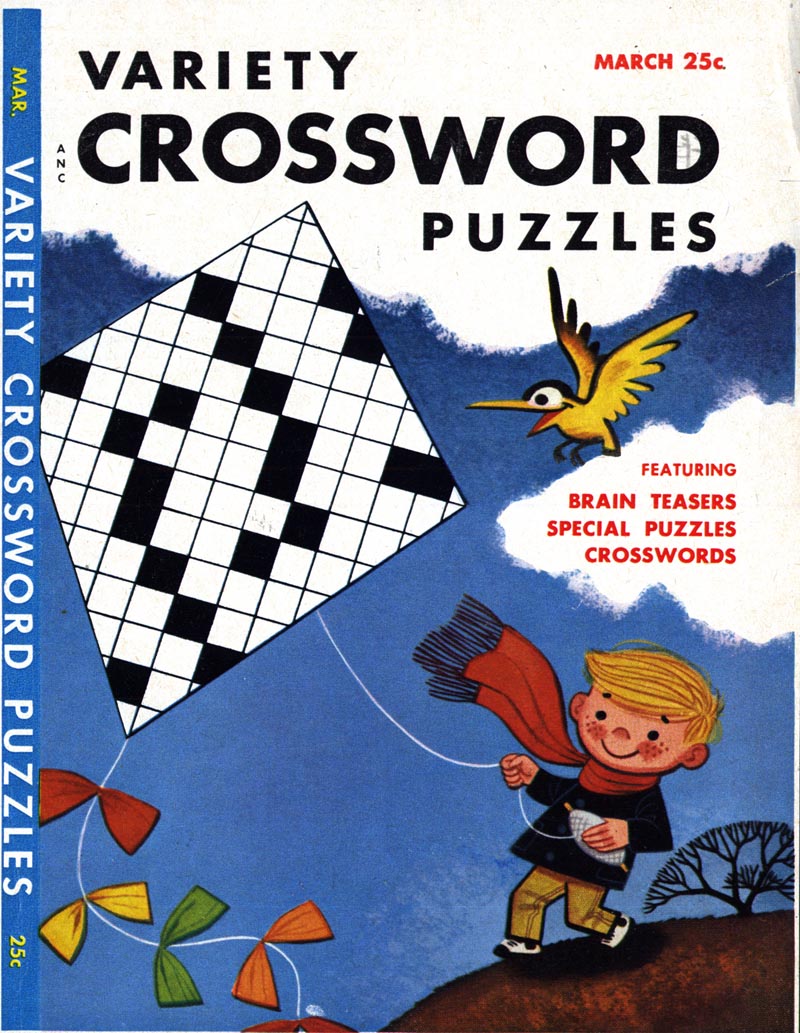
But what a testament to the artist's skill that he would do work this good and barely give it a second thought.

I'm pleased to report that there are several more not shown here in Lowell's new book.

Some of Lowell's zaniest artwork was done for the 'tough guy' men's magazine, Blue Book.
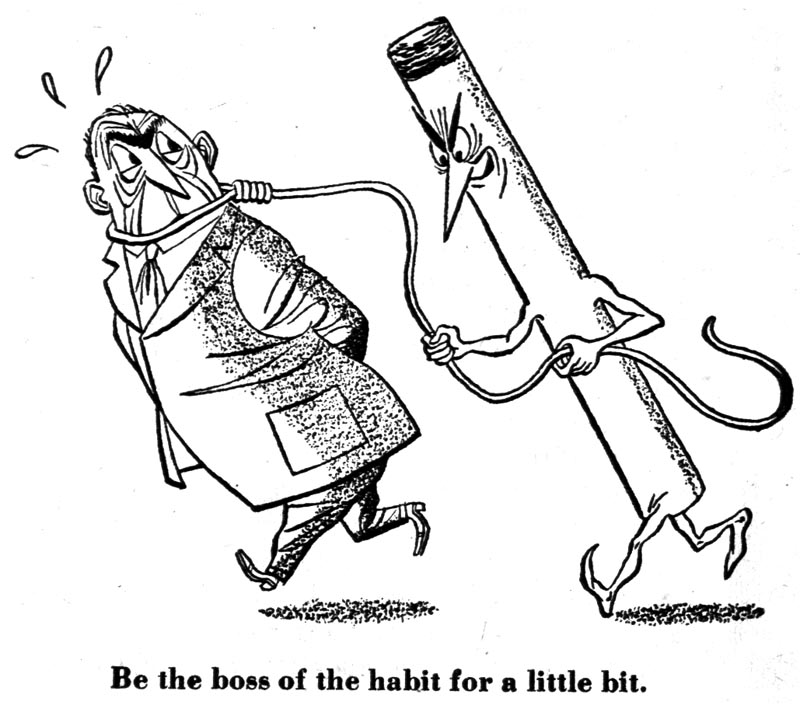
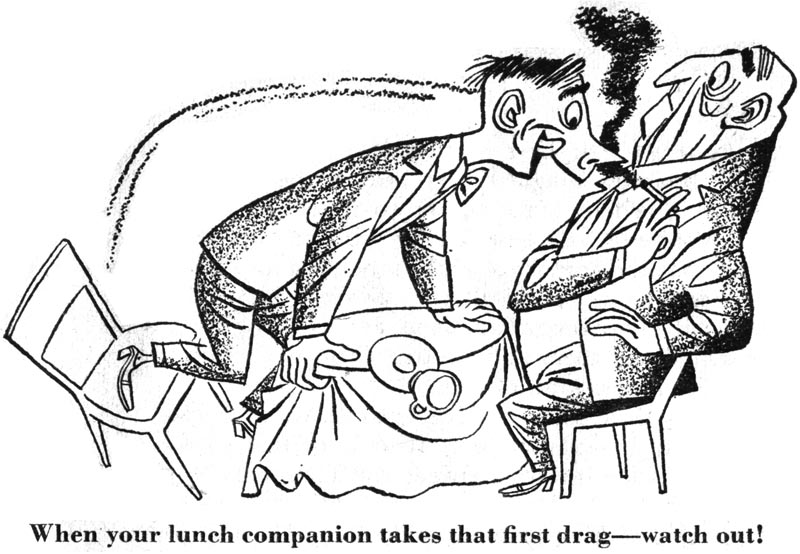
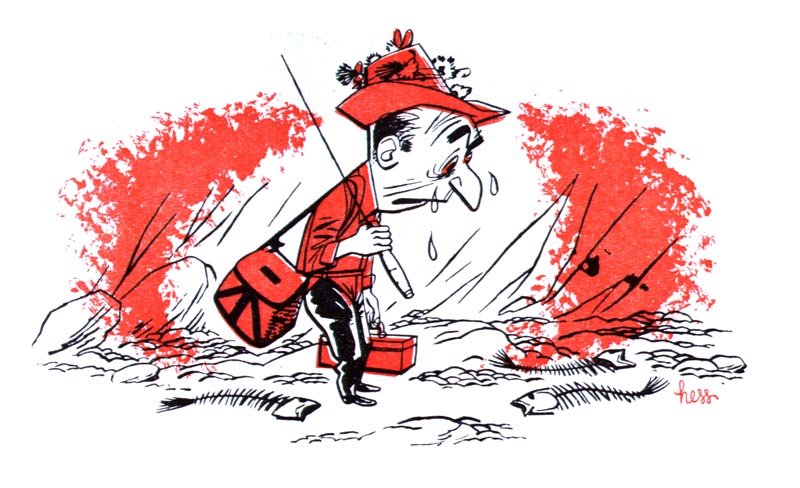
When you add up all the work Lowell was doing for magazines - and then include his gorgeous storybook art for Golden Books (some examples shown in an earlier post) and realistic, scientific illustrations for Time-Life, its easy to imagine the artist running himself ragged.
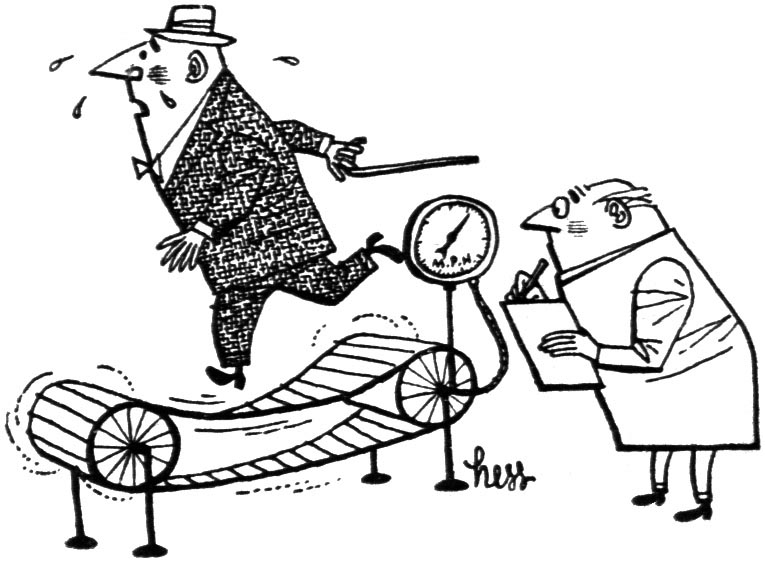
But with the arrival of the 1960s, like so many other illustrators, Lowell found himself drastically underemployed. Photography had taken over and art assignments dramatically dropped off as magazines slimmed down because ad dollars had migrated to the rapidly expanding television audience. Lowell struggled through for most of the '60s. At one point he invested a great deal of time and effort into a newspaper comic strip proposal but sadly, as is often the case, it was rejected.
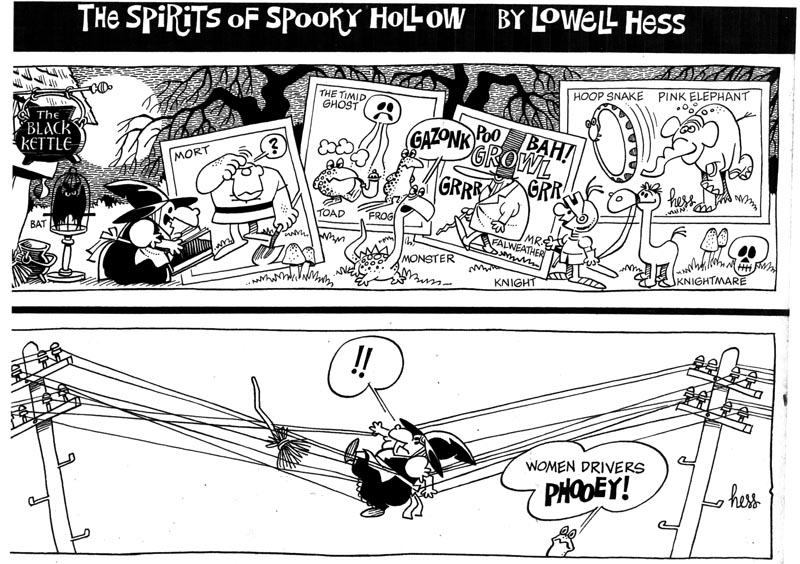
(The strip finally sees the light of day in Lowell's new book, The Art of Lowell Hess) In the late '60s and early '70s, Lowell strove to adapt his style to changing trends in illustration...
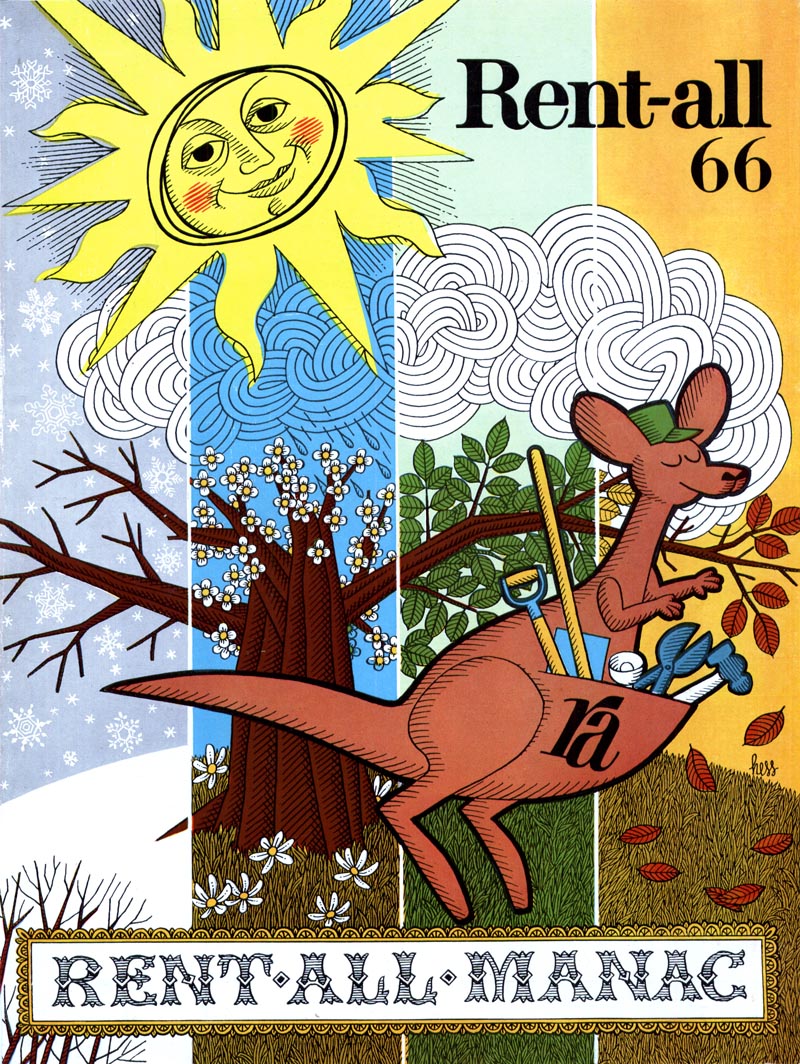
... and cartoon art...
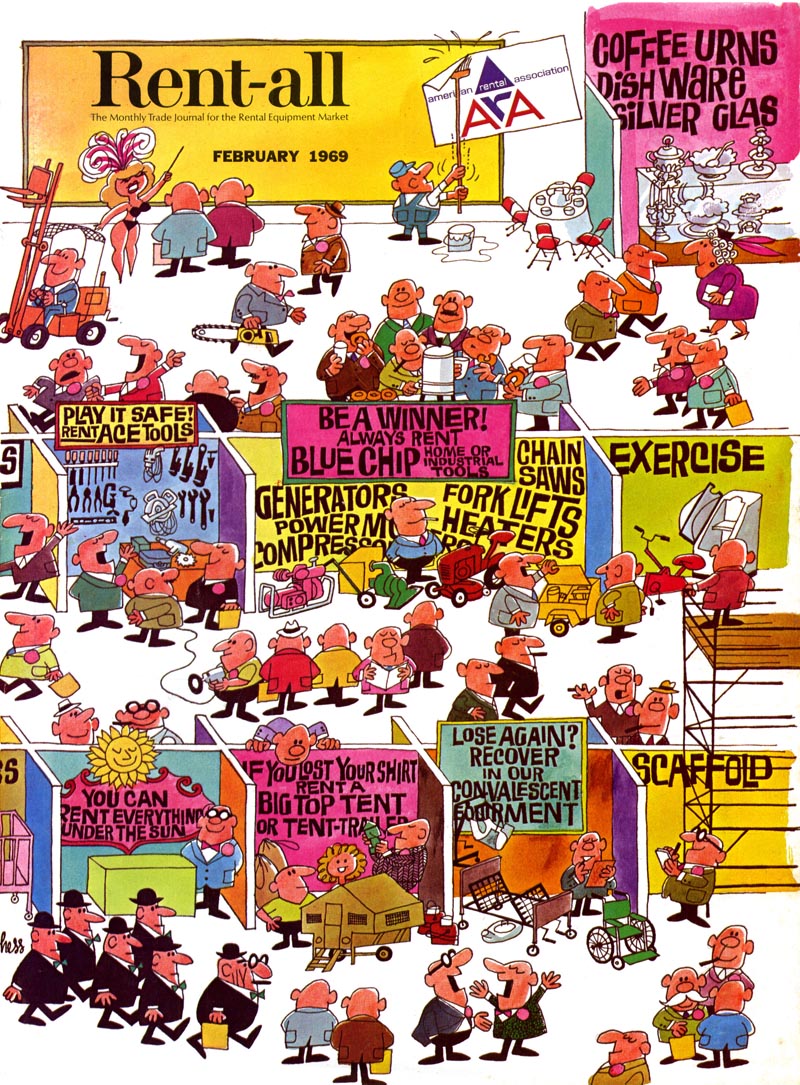
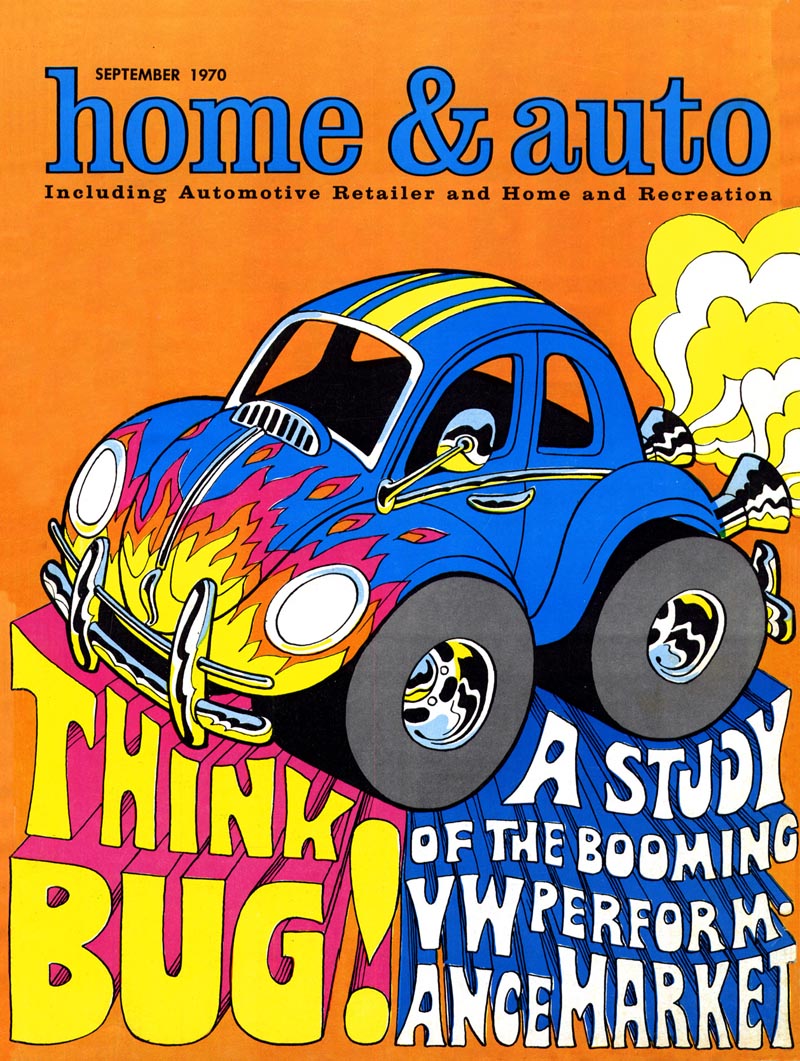
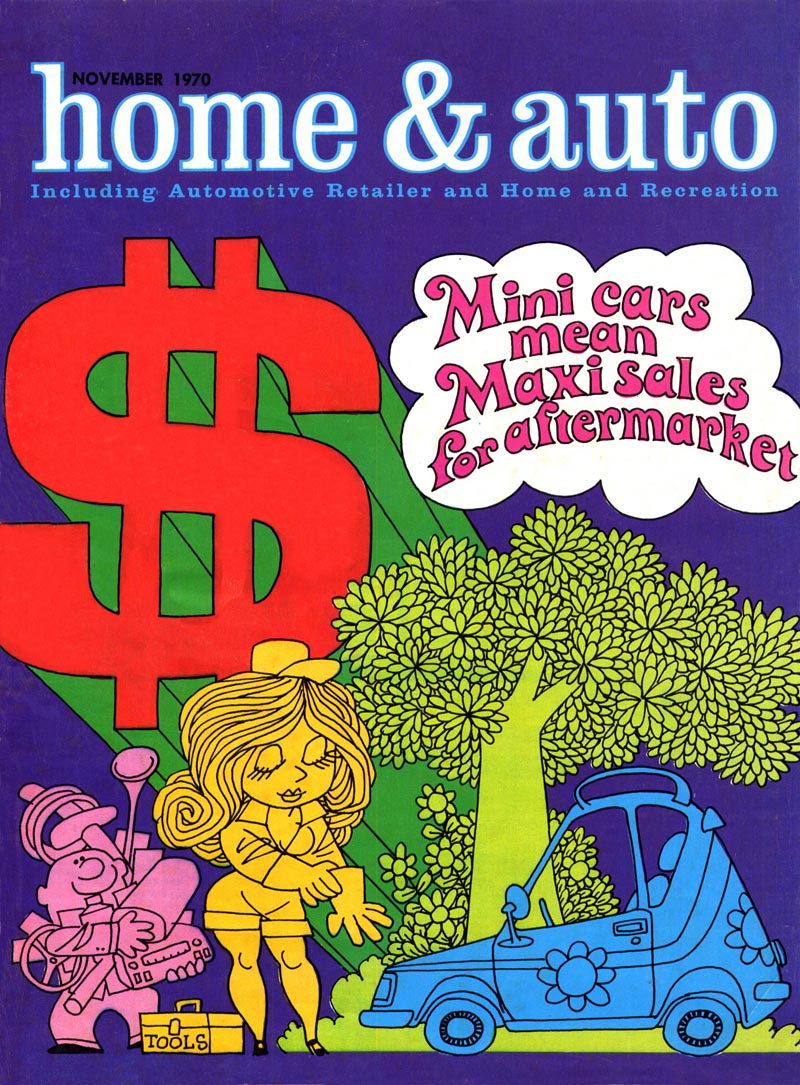
... but, he writes in his new book, "After not making a dime for eight months, I told an employment agency in desperation, "I can work with paper, I can do anything!"

With that proclamation, Lowell landed the job that would occupy the next three decades of his career. He became the resident paper engineer and in-house illustrator at a company that specialized in creating pop-up greeting cards called Graphics3. Below are just a few of the many magnificent pop-up cards Lowell designed, engineered and illustrated during the 30 years he worked at Graphics3.
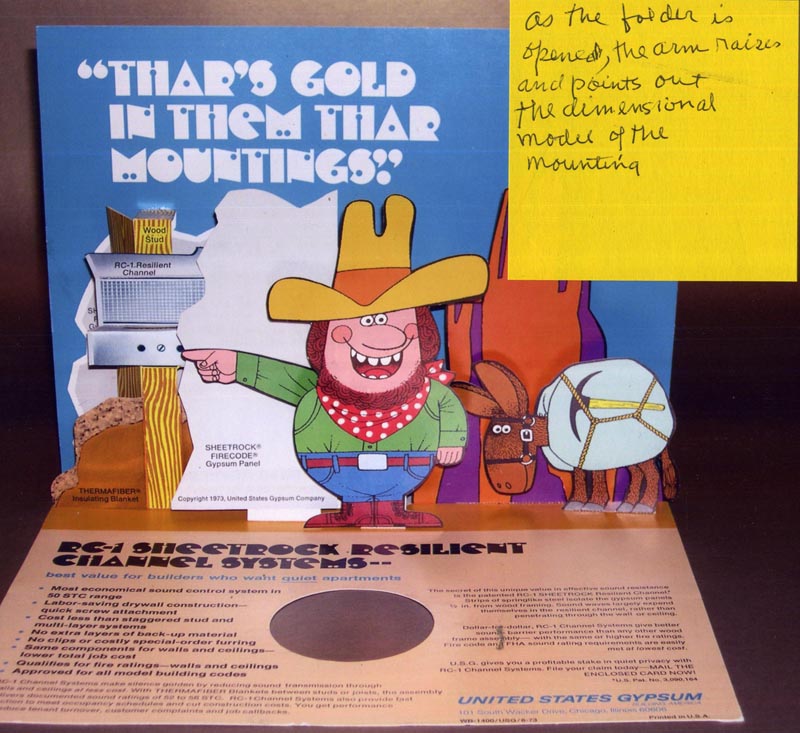
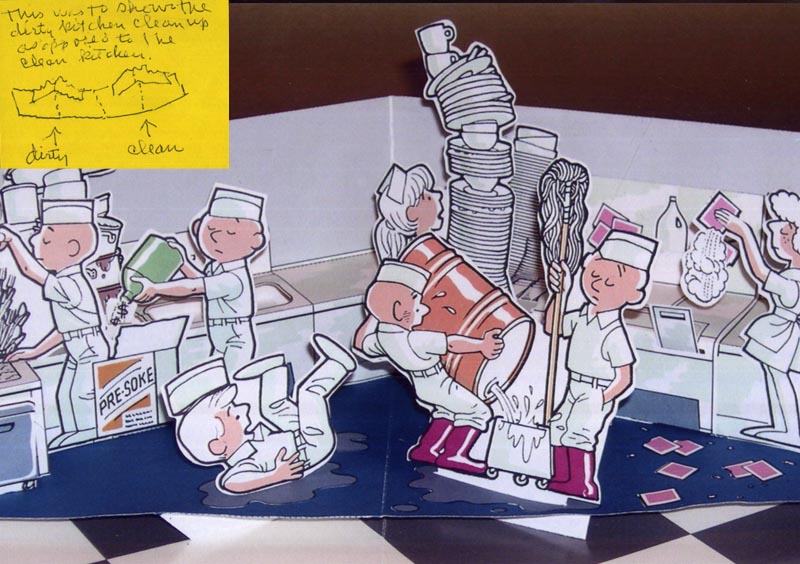
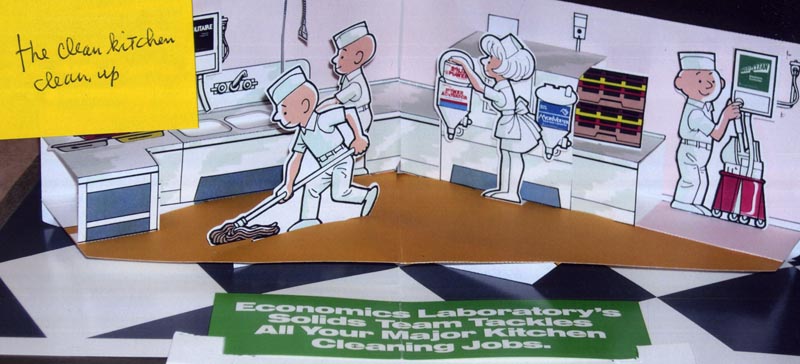
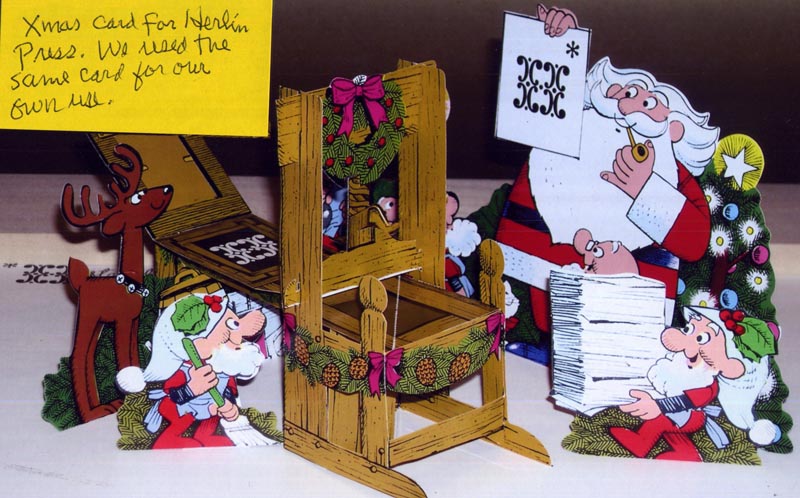
In his mid-60s Lowell developed an interest in wood carving. In one note he sent to me he wrote, "About 15 years ago I decided to try my hand at wood carving. This is a sample of some of the things I've carved."
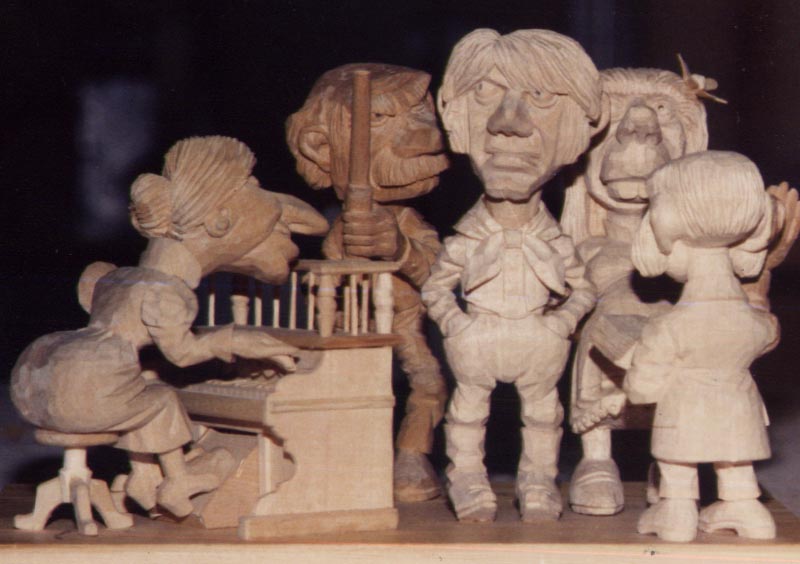
"I was fortunate to win a lot of blue ribbons for them," he added.
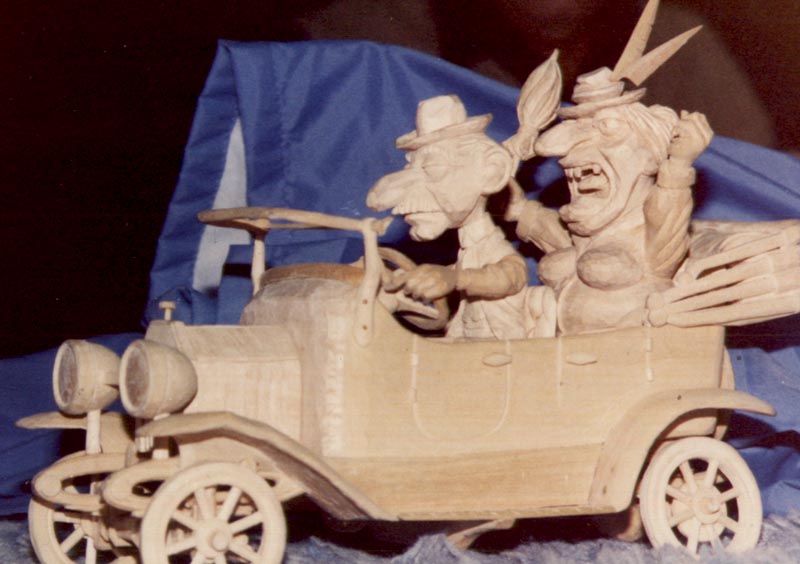
And in his intro to The Art of Lowell Hess he adds this feisty conclusion: "Now I create the carvings I want and don't have to please anyone! If nobody likes it, tough!"
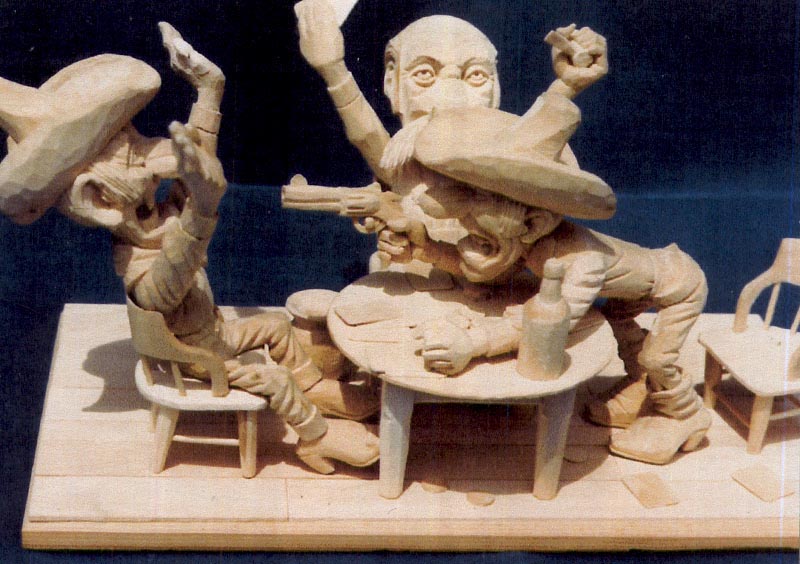
The Art of Lowell Hess is available for purchase at either Barnes & Nobles or Amazon.com
And please be sure to visit Lowell Hess' website for even more great art - or to drop him a line!

When he attended the University of Oklahoma he "picked up a few covers for the school's humor magazine," drew humorous depictions of student life for the college dance hall and caricatures at the student carnival. Lowell remembers that "long after the festivities, I went home and drew funny faces late into the night."

WWII interrupted Lowell's education. The newly married young artist writes that he spent 1942-45 "in army clothes as an Artillery Lieutenant in Europe." After the war Lowell's ambitions quickly brought him to New York. He managed to land the occasional assignment from major magazines like Woman's Home Companion, but competition was tough and work for Lowell was sparse. In one of our early phone conversations Lowell told me Jan Balet, who was enjoying tremendous popularity at the time, was his biggest influence during those formative years, and it shows in this January 1948 example of Lowell's work
.

But just a few months later you can see the beginning of the true Lowell Hess style emerging as the young artist became more confident.

By the early '50s, Lowell's career had taken off. He had secured the services of an established artist's rep and was regularly contributing to Collier's magazine - even illustrating three covers - which had been a life-long dream of his.

During that busy decade, Lowell also did 22 covers for Boys' Life magazine...

... and even more interior art spots.

In his work for Boys' Life Lowell's versatility really became apparent. He began exploring beyond his cartoon styles...

... into something approaching high realism. Lowell's versatility would serve him well on later assignments for Reader's Digest, Time-Life, and other clients.

Another of Lowell's clients during the '50s was a publisher of Crossword Puzzle books.

These covers are, in my opinion, some of Lowell's most delightful illustrations...

... but until I mentioned it, Lowell told me he hadn't really given them much thought.

They were low paying and low profile assignments and therefore done quickly. After we discussed them, Lowell told me, "you know, now that you mention it, they're actually pretty good!"

But what a testament to the artist's skill that he would do work this good and barely give it a second thought.

I'm pleased to report that there are several more not shown here in Lowell's new book.

Some of Lowell's zaniest artwork was done for the 'tough guy' men's magazine, Blue Book.



When you add up all the work Lowell was doing for magazines - and then include his gorgeous storybook art for Golden Books (some examples shown in an earlier post) and realistic, scientific illustrations for Time-Life, its easy to imagine the artist running himself ragged.

But with the arrival of the 1960s, like so many other illustrators, Lowell found himself drastically underemployed. Photography had taken over and art assignments dramatically dropped off as magazines slimmed down because ad dollars had migrated to the rapidly expanding television audience. Lowell struggled through for most of the '60s. At one point he invested a great deal of time and effort into a newspaper comic strip proposal but sadly, as is often the case, it was rejected.

(The strip finally sees the light of day in Lowell's new book, The Art of Lowell Hess) In the late '60s and early '70s, Lowell strove to adapt his style to changing trends in illustration...

... and cartoon art...



... but, he writes in his new book, "After not making a dime for eight months, I told an employment agency in desperation, "I can work with paper, I can do anything!"

With that proclamation, Lowell landed the job that would occupy the next three decades of his career. He became the resident paper engineer and in-house illustrator at a company that specialized in creating pop-up greeting cards called Graphics3. Below are just a few of the many magnificent pop-up cards Lowell designed, engineered and illustrated during the 30 years he worked at Graphics3.




In his mid-60s Lowell developed an interest in wood carving. In one note he sent to me he wrote, "About 15 years ago I decided to try my hand at wood carving. This is a sample of some of the things I've carved."

"I was fortunate to win a lot of blue ribbons for them," he added.

And in his intro to The Art of Lowell Hess he adds this feisty conclusion: "Now I create the carvings I want and don't have to please anyone! If nobody likes it, tough!"

The Art of Lowell Hess is available for purchase at either Barnes & Nobles or Amazon.com
And please be sure to visit Lowell Hess' website for even more great art - or to drop him a line!






0 comments:
Post a Comment